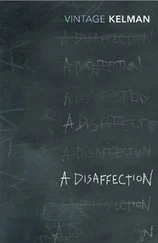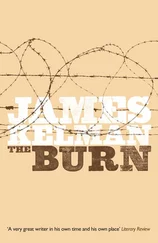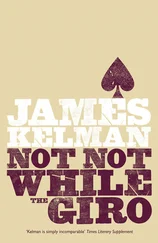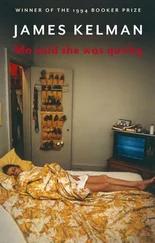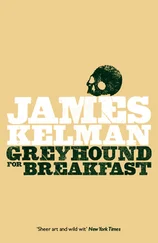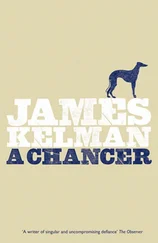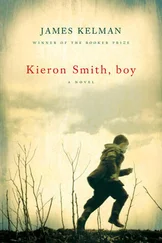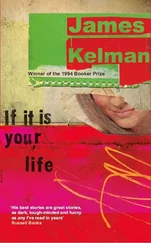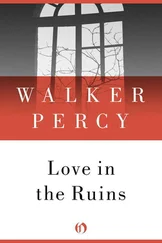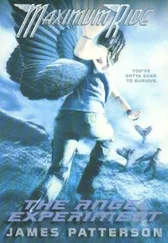James Kelman - An Old Pub Near the Angel
Здесь есть возможность читать онлайн «James Kelman - An Old Pub Near the Angel» весь текст электронной книги совершенно бесплатно (целиком полную версию без сокращений). В некоторых случаях можно слушать аудио, скачать через торрент в формате fb2 и присутствует краткое содержание. Издательство: Birlinn Ltd, Жанр: Современная проза, на английском языке. Описание произведения, (предисловие) а так же отзывы посетителей доступны на портале библиотеки ЛибКат.
- Название:An Old Pub Near the Angel
- Автор:
- Издательство:Birlinn Ltd
- Жанр:
- Год:неизвестен
- ISBN:нет данных
- Рейтинг книги:4 / 5. Голосов: 1
-
Избранное:Добавить в избранное
- Отзывы:
-
Ваша оценка:
- 80
- 1
- 2
- 3
- 4
- 5
An Old Pub Near the Angel: краткое содержание, описание и аннотация
Предлагаем к чтению аннотацию, описание, краткое содержание или предисловие (зависит от того, что написал сам автор книги «An Old Pub Near the Angel»). Если вы не нашли необходимую информацию о книге — напишите в комментариях, мы постараемся отыскать её.
was published and the rest is history. The US edition has never been out of print.
An Old Pub Near the Angel — читать онлайн бесплатно полную книгу (весь текст) целиком
Ниже представлен текст книги, разбитый по страницам. Система сохранения места последней прочитанной страницы, позволяет с удобством читать онлайн бесплатно книгу «An Old Pub Near the Angel», без необходимости каждый раз заново искать на чём Вы остановились. Поставьте закладку, и сможете в любой момент перейти на страницу, на которой закончили чтение.
Интервал:
Закладка:
My grandfather took a part-time job as a door manager at the old Empire Theatre. His great pastime was music and he sang in one of Glasgow’s choruses, so maybe he had contacts in show business. He still worked in a small way at the trade where possible. One customer was the artist J.D. Fergusson. His wife was Margaret Morris, a famed dancer and beauty of the day. She is the model Fergusson painted most frequently. Unfortunately my grandmother was sensitive to certain matters where Alexander was concerned. She thought his choral activities an excuse to meet other women. One night he got the family free tickets for a show, and when he was showing my grannie to her seat in the stalls there came a call from above, Yoohoo Sandy!
It was Margaret Morris from up in the boxes with J.D., dressed in the height of fashion. She stood up to wave down to my grandfather. And she used ‘Sandy’, his family name. My grannie never forgave him. Later they separated. My father was 12 at the time. He remained with his father, lodging in houses around Kelvinbridge. When the pair flitted from place to place the bulk of their belongings was choral songbooks. They had different workshops over the years; Partick Cross, Otago Street, Gibson Street and Great Western Road were some of the addresses. But he stayed in touch with his mother, and when we were growing up we visited her regularly. She was the last Gaelic speaker in my immediate family, Katherine MacKenzie from Kios on Lewis. Dizzie Gillespie’s grannie was also a Gaelic speaker, from North Carolina, U.S.A.
Before the First World War picture-framers and gilders could be hired on a casual basis at the corner of Cadogan Street and Waterloo Street. Many art studios lay up Blythswood Hill, in the vicinity of the square, five or ten minutes from the Glasgow School of Art. Female models were traditionally hired from there by artists. The art models have been gone for nearly a century. From there and down the hill towards Argyle Street women continue to hire their bodies, but for the last many years they have risked horrific violence, including murder, selling themselves for sex.
In the 1950s Salvador Dali’s painting, Christ of Saint John of the Cross , was vandalised by one of Glasgow’s religious bigots inside Kelvingrove Art Gallery. Under Dr Honeyman’s direction the gallery had purchased some very fine art, including the vandalised Dali painting. My father was one of the many with whom he discussed its restoration. I remember seeing other ripped, scarred and badly damaged canvases people brought into his Gibson Street workshop. In some of those paintings large areas were threadbare. Time and patience were required for these jobs. Eventually, and it could be several months later, he could show us where he had mended the canvas and applied the paint and whatever else was necessary. Note the clouds and the flock of geese. See that bush, these big waves. Look closely.
If it had been a very bad rip you might see something of the repair; otherwise not. Of course it was him that had painted the clouds, the bush and the flock of geese, matching the oils of the eighteenth-century original. That trade was full of stories.
One morning in the early 1970s Marie and I were walking along Sauchiehall Street and we stopped to read the notice for a forthcoming sale of Scottish paintings at the old Crown Auction Rooms. One of the artists whose work was to be auctioned was Alexander Kelman. I asked my father if he was a relation. He’s your grandpa!
Whenever the signature disappeared from the face of a canvas during the restoration process one of the old-time journeymen signed their own name for a laugh. Some of these old paintings had been in and out of restoration so often that the only paint left on the canvas had been applied by the restorers.
My grandfather died in 1951. He is buried in his family lair along King Street, Aberdeen.
In my teens the biographies of artists of the late eighteenth and the nineteenth centuries were some of my favourite reading. I looked at reproductions of their work too. I enjoyed people like Dave, Ingres, Corot and Courbet; and Velázquez and Rubens; and, in particular the Impressionists and Post-Impressionists. My early heroes were Degas and Manet; afterwards Modigliani, Rodin, Cézanne and Utrillo; especially Rodin and Modigliani, flitting in and out of Parisian bars and coffee houses, never eating, swallowing dope and booze by the bucket, constant sex. Then they all met other artists for conversations over a bowl of Mrs Pissarro’s homemade soup. What a life! I thought Modigliani’s paintings of naked women were just superb and if anybody wanted to argue — well, I would just have argued back.
I assumed I would become a painter. Art was the only class that interested me at school. My first proper art teacher, Mrs Harper, was strict but ironic, the best kind. She let us choose and sort out the materials for ourselves; charcoals, brushes, get our own water from the sink. To be granted such responsibility was an extraordinary experience. You were also allowed to talk to your classmates, females as well as males, as long as you kept it quiet and did not laugh too loudly.
Nevertheless, school proved too much for me even in the short run. I turned 15 and needed out. I returned to start a fourth year in August but those first days were a living nightmare. I had failed third year in the most miserable fashion so this fourth year was a repeat year. A careers teacher was seeing pupils so I took that opportunity to escape a double period of History which, as I recall, was devoted to the Exciting Adventures of the later Diaturnable Drones of Imperial England. I discovered I was out of cigarettes so went along to hear the careers teacher to pass the time. He asked if I was interested in anything. Art, I said.
Well, I have the very job for you.
The printing trade. A firm down the road in Partick was looking for a boy and my qualifications were spot on: Boys’ Brigade and Protestant Senior Secondary School.
You did not have to be a Protestant to work in that printing shop but it got you entry into the better occupations. Protestants became compositors. Catholics did the labouring and semi-skilled work. If they made it as time-served journeymen it was to the level of machinemen, printers. They wore boiler-suits. The very idea. Compositors wore dustcoats.
A drawback to hourly paid work is how it crushes the spirit. First Year Apprentice Compositors had their own defences. If you were at your wits’ end and desperate for a day off, you injected yourself with lead. You drew blood around the area of the wrist and rubbed in some of the fluid from the lead type, then waited to see if it ‘travelled’. The thing that ‘travelled’ was poison. It ran a thin red streak up a vein in the inside of your forearm. It was great when it ‘worked’. You showed the thin red stripe to the gaffer and he sent you home. But you were not to let the red line move beyond your elbow. If that happened it went right up and through your body and just was there and ‘it’ would not come out, thus one had breathed one’s last, that was you, deid. You had to flex your upper-arm muscle as tautly as possible and grip your inside elbow very tightly. That stopped it.
My father and mother decided to emigrate with the family to the U.S.A. in 1963. They were in their early forties with five sons, aged from three to 20. My father advertised in different newspapers across the U.S.A. and received replies from around seven prospective employers, including Houston, Texas; Springfield, Missouri; and Hartford, Connecticut. Dr Honeyman had written his references. He and my mother chose Los Angeles, California, working for a private art gallery in Pasadena. A house went with the position. They gave myself and my elder brother, Ronnie, the choice to go or stay. I could finish my apprenticeship — my other grandparents, my mother’s parents over in Govan, offered me a place to stay — then emigrate later. To go with my family meant severing my apprenticeship, but it was an easy choice. Ronnie also decided quickly. He worked as a clerk for the old Glasgow Corporation and was glad to escape. Our younger brothers Alan and Philip were still at school while Graham, the youngest, was only three.
Читать дальшеИнтервал:
Закладка:
Похожие книги на «An Old Pub Near the Angel»
Представляем Вашему вниманию похожие книги на «An Old Pub Near the Angel» списком для выбора. Мы отобрали схожую по названию и смыслу литературу в надежде предоставить читателям больше вариантов отыскать новые, интересные, ещё непрочитанные произведения.
Обсуждение, отзывы о книге «An Old Pub Near the Angel» и просто собственные мнения читателей. Оставьте ваши комментарии, напишите, что Вы думаете о произведении, его смысле или главных героях. Укажите что конкретно понравилось, а что нет, и почему Вы так считаете.


